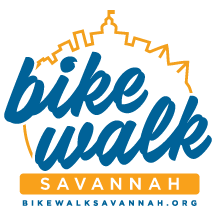As you all know, the City of Savannah has garnered an honorable mention in the most recent Bicycle Friendly Community ratings awarded by the League of American Bicyclists. So, we’re not there yet, but we have a good start.

We now have the full feedback from the League, with suggestions from the local cycling community as well as experts in the field. The full report is available here. Some highlights:
Engineering:
- Adopt a complete streets policy
- Adopt and implement a comprehensive bike plan
- Develop a designated east-west bicycling corridor
- Develop a bridge access policy
Education:
- Add educational message to utility bills
- Continue to improve bicycling education opportunities for adults
Encouragement:
- Consider a “Ciclovia” or “Summer Streets” event to open streets to nonmotorized users
- Commuter challenge or bike to work pit stop for Bike to Work Week
- Consider an ordinance to require larger employers to provide showers, bike parking, and other encouragement tools.
Enforcement:
- Encourage police officers to use targeted enforcement to encourage motorists and cyclists to share the road, such as a tip card explaining each user’s rights and responsibilities.
- Host Enforcement for Bicycle Safety seminar.
Evaluation:
- Update the Bicycle Master Plan. The new plan should set targeted annual goals for implementation.
- Continue to improve data collection methods on bicycle usage and crash statistics and evaluation of this data. Use this data to prioritize infrastructure upgrades or targeted enforcement efforts.













